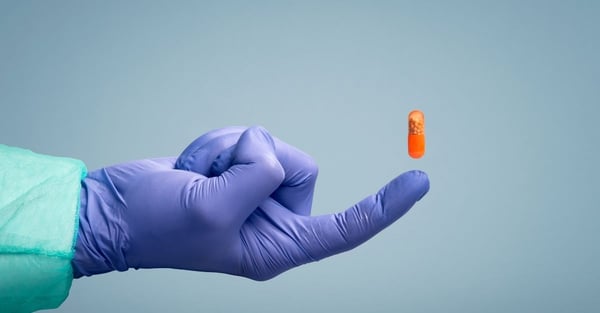It takes at least 10 years to identify a new drug, design and implement the research and testing procedures and gain market approval, at an average cost of $2.6 billion (Tufts Center for the Study of Drug Development). Just within the field of Drug Discovery, only about 1 in 5,000 drugs obtain regulatory approval.
To give an idea of how few drugs are endorsed each year, only 53 were approved by the FDA (U.S. Food & Drug Administration) in 2020 (despite the COVID-19 pandemic limitations) and in 2019 (with no COVID-19) only 48 were approved.
Whilst these numbers may seem high for the pharmaceutical companies, considering the many diseases in the world that have no cure they are small and demonstrate the need for more development. The World Health Organization (WHO) states that chronic diseases, such as heart disease, lung disease and stroke were the leading causes of death in 2019, and there is still no cure for any of these.
Target validation is therefore essential to reduce the extremely high costs and long time frame required to develop a new drug. It is important to understand whether it is worth researching and developing a drug and the likelihood it will be successful.

What is Target Validation?
Many drugs fail as a result of poor efficacy (they do not work on the targeted disease or illness) or toxicity (they are not safe to use on humans).
The target is the agent (usually a gene or protein) that is linked to a specific disease i.e. its origin.
Target validation comes after the first step in identifying the feasibility of the development of a particular drug, which is known as target identification. This determines how the target works and its effect on a disease.
Target validation then demonstrates that there is a clear link between the target and the disease and that its modification will have a useful benefit on the disease.
Drug failure is common before the clinical testing phase (on live subjects) and therefore minimising this risk using target validation is extremely valuable for pharmaceutical companies.
It involves the use of certain tools to identify whether a drug in development will have a successful therapeutic outcome. These tools include models such as:
- Computer models
- CRISPR
- Morpholinos
These methods are an alternative to using in vivo (live) animals for drug research and development, which can be a time-consuming and costly procedure.
How is Target Validation Carried Out?
Target validation uses various methods to modify the target to assess its suitability for development. These gene-editing procedures are all alternative models to traditional animal testing and therefore reduce unnecessary suffering, costs and time.
Computer Models
A computer simulation designed to predict the effects of a drug on a disease. The model can represent many different replications, from a single cell to whole organs. This is an accurate and popular method that uses data collected harmlessly from live models to anticipate whether a drug will succeed or fail.
CRISPR
CRISPR (clustered regularly interspaced short palindromic repeats) is a tool that can alter DNA function and gene sequences through genome editing. The process can disable gene mutations that cause illness and disease.
Morpholinos
A molecule, containing DNA, which can be used to genetically modify and ‘silence’ harmful genes.
Each of these methods makes assumptions about the predicted effect a drug will have on a disease.
The Use of Zebrafish for Target Validation
The Zebrafish is an in vivo model used to study and combat human disease.
Target validation using Zebrafish is common as there is increasing pressure on pharmaceutical companies to reduce testing on animals and save drug development costs.
Zebrafish are suitable for the above three genetic engineering methods as they:
- Resemble human genes and DNA very closely.
- Hold similar disease-causing genes to those in humans.
- Breed fast and in large numbers.
- Are affordable and easy to care for.
- Are transparent, allowing the study of their internal organs.
This means using Zebrafish for target validation can avoid the time and money wasted on unsuccessful drug development.
Accurate and fast Drug Discovery is crucial to improve human welfare. Target validation supports this as it can significantly improve the success rate of new drug development.





